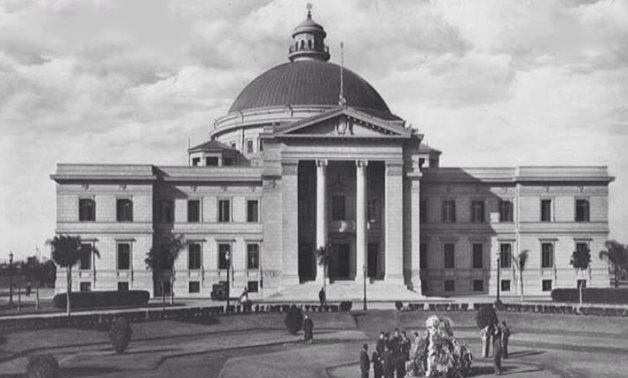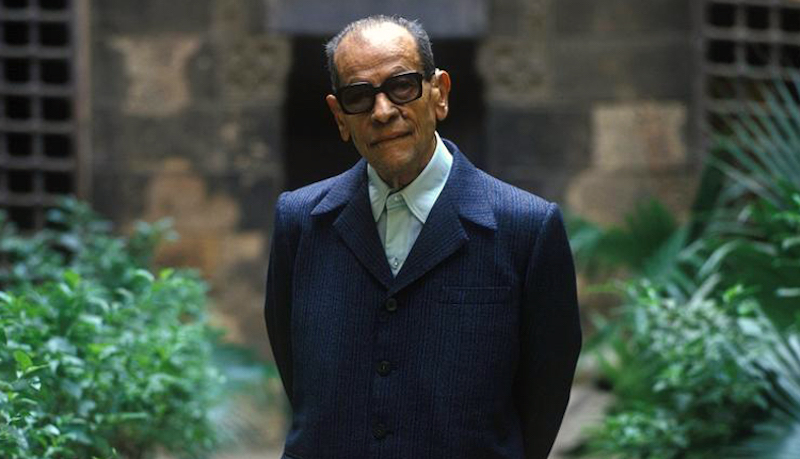
From a distance, it is likened to a citadel: with a wide dome and daunting structure. Closer, it is more akin to a mosque, with the illusion of crescent peaks and minarets. However, when one stands at the gates, it is neither; it is Cairo’s cornerstone university, and Egypt’s first national institution for higher learning.
For a century, Cairo University has been a landscape for the gifted, and a historical monument which marked the modernisation of Egyptian learning—becoming both a benchmark and blueprint for universities across the region.

Prior to Muhammed Ali’s restructuring of Egypt’s educational systems—an endeavor which saw the country lean further and further into French inclinations—Al Azhar was the “main pillar” of higher education in the country; between its focus on the elementals of Islam and its decorated history, Al Azhar was an epicenter for budding intellectuals and religious schoalrs region-wide. Still, despite its esteem, the institution was not immune to deterioration.
During the Ottoman reign over Egypt, Al Azhar was in a state of decline, and as such, an alternative was sought out. This shepherded the beginning of a new educational system, one which launched in 1836 and continues on to this day. By the early 1900s, the call for a national, Egyptian university became impossible to ignore or deny.

Mostafa Kamel Pasha, a national activist and one of Egypt’s beloved historical figures, was one of the first to make the call, publishing an 1906 article in which he pledged to start “funding the establishment of a university.” Soon after, figures such as Saad Zaghloul, Egypt’s then-minister of education and founding leader of the Wafd political party, and Qasim Amin, a renowned feminist judge, lobbied for the same cause. Zaghloul would remain as minister of education only until 1910, when he would become minister of justice.


Following suit, many Egyptians donated to the founding of Cairo University—the most prominent of whom was Princess Fatma Ismail, daughter of Khedive Ismail. She provided an endowment of 661 feddans (686 acres) to the establishment of the university, donated six feddans (6.2 acres) of royal land to expand its campus, and a historically significant EGP 18,000 (USD 915 based on current conversion rates, but was a heftier sum at the time) for its construction. Alongside her donations, the princess made certain that “two of the era’s most enlightened sheikhs as well as the country’s supreme judge, would sit on the university’s founding board.”

The construction process itself had taken years and several phases to complete, and what was started by Khedive Ismail and his daughter would be seen through by King Fouad later in 1928. The Egyptian University, as it was called at the time, was open to the public as of 21 December 1908. It’s worth noting that, upon its opening, the university was “small” and “private,” only later taken over by the state in 1925 when it officially became Fouad I University. Only then did it transform into a “major state institution.”
During this period, British involvement in Egyptian affairs witnessed the stripping down of French influence at the university, but even it slowly lost influence as efforts continued to Egyptianize the faculties.
It was Gamal Abdel Nasser, however, who opened Cairo and other universities to impoverished communities during his presidency in the 1950s.
Over the years, the university has seen the likes of kings and poets, queens and songbirds pass through its doors.


From Taha Hussien and Naguib Mahfouz, to Nawal El Saadawi and Sameera Moussa: the university saw some of Egypt’s finest minds to capacity, and in equal measure, became the region’s leading institution for decades with world leaders such as Sultan bin Mohamed Al-Qasimi of the United Arab Emirates and Tokyo Governor Yuriko Koike.

The alumni of Cairo university are many, some decorated and influential, much like the institution they graduated from. The years, however, have done a disservice to its reputation; with over 155 thousand students in 2003, the university’s degree of excellence was lost in the crowd, with only pockets remaining of the intellectualism seen in its early days. The private sector has also gained momentum in its own right, though there is no doubt that despite its modern shortcomings, Cairo University—the Egyptian University, Fouad I University—remains Egypt’s most prestigious public institution to date.
Subscribe to the Egyptian Streets’ weekly newsletter! Catch up on the latest news, arts & culture headlines, exclusive features and more stories that matter, delivered straight to your inbox by clicking here.






Comments (2)
[…] Utforska arvet och livslängden från Kairos universitet Höstskörd: zaghloul datumsäsong i Egypten […]
[…] Ukuhlola Ifa Nokuphila Isikhathi Eside SeYunivesithi yaseCairo I-Fall Harvest: I-Zaghloul Date Season e-Egypt […]